
DIY Doomsday Devices
Tristan Shone is a white-coat-wearing, microscopy research lab rat by day that moonlights as an experimental, electronic, industrial doom, one-man band called Author & Punisher — just like any hard working engineer’s weekend warrior outlet, complete with purpose-built 300lb steel MIDI controllers.
Main Photo: Robert Kozek
Before his engineering day job, Tristan Shone earnt a Master of Fine Arts in Visual Arts, which is where his penchant for building sculptural MIDI controllers began. His first collection consisted of physically demanding, heavyweight controllers that dictated his one-man band Author & Punisher’s style of dirgy, drone-y, groove metal, purely because of the effort required to move them. These were the Drone Machines; including the single-button Linear Actuator drum machine, 300lb (135kg) spinning Rotary Encoder, vocal sampling Bellows, and motor resistive Throttles.
“The first machines I made,” said Shone, referring to the Drone Machines. “Were very heavy and slow, and so were the improv performances – it wasn’t about dynamic, it was about drone. I would lift this big classic noise crescendo. It seems like I’m doing a lot but I’m basically playing one pitch line of one key. There are no chords, though occasionally there are two notes.”
Although the Drone Machines were entirely impractical from a touring perspective, Shone still made music, recorded and played live with them. Though these days the monolithic devices have been retired to a lab at UCSD (Uni of California San Diego) till someone can finance the muscle to get the 300lb gorillas on the road.
“They were intended to be sculptures for my Visual Arts degree,” said Shone. “I didn’t expect to put them in Pelican cases and take them to the airport with me. When I built the second lot I began thinking about realistic weights I could take on an airplane.”
This second set of controllers are called the Dub Machines, which although not quite as heavy, are still physical, because it “feels good,” according to Shone. The second batch is made up of the more advanced version of Linear Actuator called Rails, the dual key-sliding Rack & Pinion, and the eight capsule Headgear mic and beat box machine.
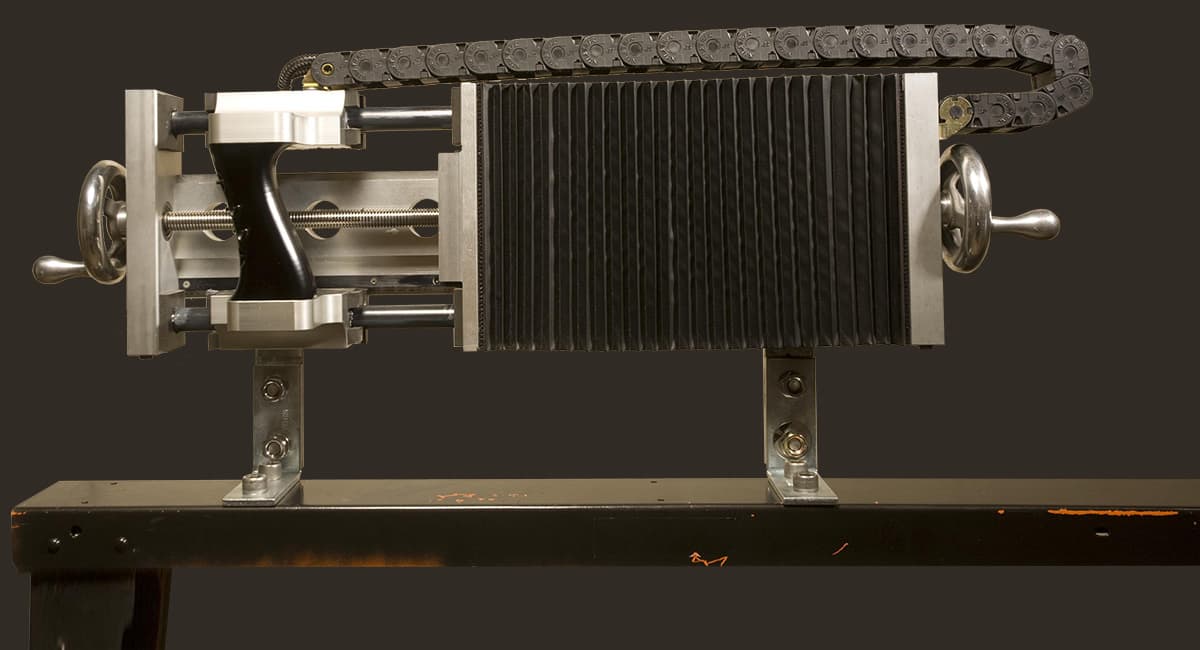
HOW I FELL FOR DUEMILANOVE
Shone’s MIDI controllers are typically built on the popular Arduino microcontrollers, specifically the Duemilanove variant. It has 14 digital in/out pins, six analogue inputs, 16MHz crystal oscillator, USB connection, power jack, ICSP (In-Circuit Serial Programming) header (for programming your chip), and a reset button. It’s an all-rounder for the type of machines Shone is building, but he says it wasn’t always this ‘easy’.
“I started out like everyone back in the ‘90s,” said Shone. “Using an Atmel-based microcontroller. It was one developed at the media lab at MIT. My professor and I tried the basic pitch-shift-based controllers and all the other ones. So my first set of machines use these Atmel controllers called Number Six.
“The reason I like Arduino so much better is because other specific microcontrollers require you to set a lot of variables within your Windows or Mac system – it’s not plug and play. In order to get your laptop setup to actually be able to send code to this device, it was like a bureaucracy, a real pain in the ass. I had done it for five different laptops and it still pissed me off.
“arduino is so popular because it made programming so simple, it just comes up. they don’t have header files that you see, you don’t see the source, all the extra files are hidden. You only have one file that’s called something like MIDI Output Button Reader. Arduino is the exact same microcontroller as many others, they’ve just worked it out to make it easier for artists. And they’re actually very high quality. We use them for microscopes in my job, where I would have to design a circuit otherwise.
“Some people will use the Arduino through a Firmata (generic protocol for communicating with microcontrollers) interface. There’s another one for PD (Pure Data), basically you would just use the microcontroller as an input device, you simply load the code once and then all the inputs from the microcontroller show up in your software, so if, for example, you put a Pin high, a little box on your screen will turn red. Then you can program using something like Max/MSP. I do my programming in C, because I kind of suck at Max/MSP. The other way people use Arduino is to do all the programming on the chip, like Rails.”


PUTTING IT ALTOGETHER
A typical Author & Punisher performance is usually a combination of Shone pumping Rails back and forth, triggering sounds with his fingers on his right hand, while sliding Rack & Pinion’s keys back and forth, and singing, screaming or beat boxing into any combination of capsules on his head gear. It’s complicated, and compelling to watch, which probably has something to do with the fact that his machinations are not always locked in step, as you might first expect.
Shone: “I’ve tried having the triggers of Rails controlling the tap tempo but I’ve switched it to just a footswitch. There are times where I need all of the tempos to be exactly where I think they are so the samples can line up with my vocal and the delay can be quantized with the delay on the drum beat. But mostly, I like the swell of time.”
As far as his sounds go though, Shone prefers to keep it a tad simpler. “I use Ableton, Reason and some of the Native Instruments stuff,” he said. “But mostly I’ll just design my sounds in Ableton. I feel like I’m always recreating the same heavy synthesiser sounds so it’s more about what the input can do for me.
“I really love the raw heaviness of Godflesh and Neurosis I heard when I was probably in 9th grade, coupled with some of the organic bass sounds I hear now from electronic producers – something that sounds really heavy and like some sort of machine. Recently, all of my sounds begin by taking a really simple sine wave within Reason, using a bit-reduction for distortion. Or I’ll find some sound from Subtractor and run the Scream distortion effect on it. But then from the microcontroller you can pulse the oscillator into giving you a bit more of an actual sawtooth. Coming directly through the microcontroller it floods your MIDI a little bit. So that’s one way I would create a unique sound, by actually pulsating on/off commands from the microcontroller into Reason, through Ableton. But more recently I’ve tried reducing the bit-reduction within Ableton and that gives something comparable to a guitar distortion.
“Compared to what some of these producers do, this is elementary stuff. When I talk to them they say, ‘You did it that way? What? I can’t believe you design your sounds that way!’”


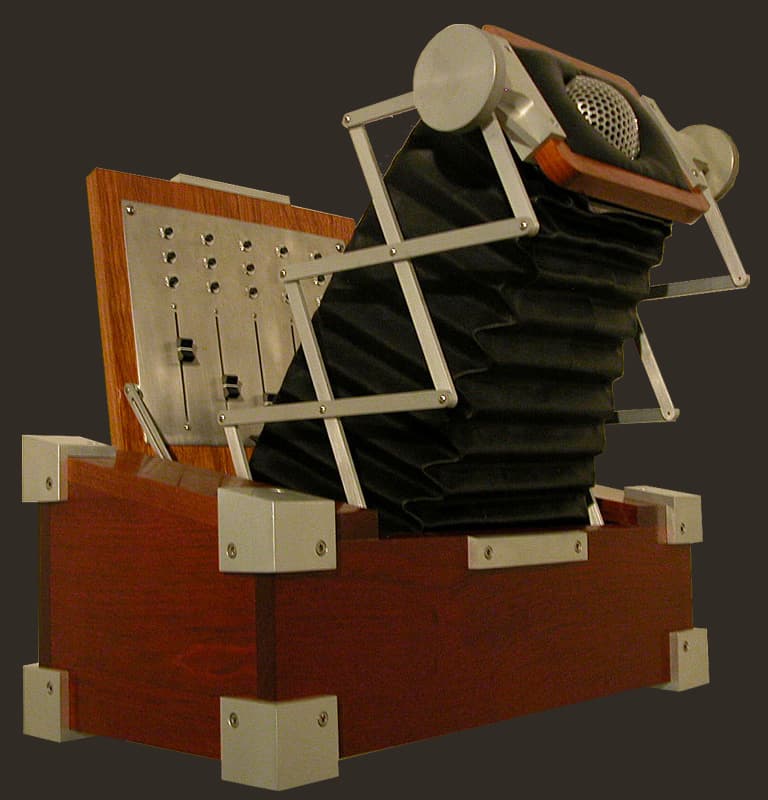

BUILD YOUR OWN DRONE
Shone says that the core of what he makes is very simple – simple enough such that even I could do it. Hmmm. So, if your keyboard or MPC just ain’t cutting it as a MIDI controller anymore, here’s what Shone has to say to anyone thinking of building their own. “You have encoders, and buttons. I think before people get into building something physical, just experiment with taking an encoder and a strip and reading that in and seeing how that controls a pitch or sound. with one button and one encoder you’ve got yourself a pretty cool oscillator. If you don’t have the resources to machine something yourself, you could dig up some found objects in an industrial yard that already has a really nice position. You can buy a really big bearing that already feels really good and has some weight. And you just glue these things on there. Glue the strip on one side with the encoder read head and you’ve got yourself an industrial machine. Start simple.”
As far as his own music goes, Shone says that crafting these machines is more about the physical imprint they have on his music than the look. “I’m not trying to make gimmicky items that look good onstage. But yes, I like sculpture and I like visual art, and I have this aesthetic direction that I’m going in that makes me feel powerful on stage. When I’m in the shower, or thinking of the set, or of new machines I want to make, I’m moving my body in the same way that I do with my machines. So it’s not contrived. I’m sure everyone has some sort of weird pose they make when they play music live. And you never know what happens with simple changes – like going from a guitar to a baritone guitar – with just a change of instrument, people can create entire new genres of music.”
Kind of makes you wonder if Keith Richards had never seen a Telecaster, whether the Rolling Stones would have jangled the way they did.







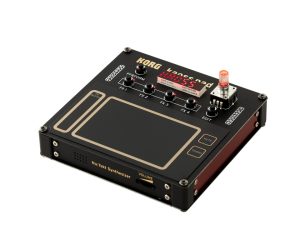
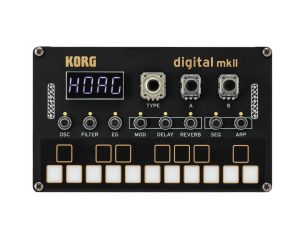



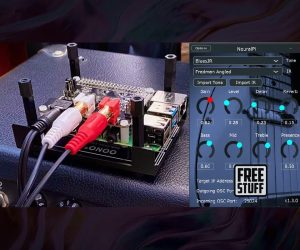



RESPONSES